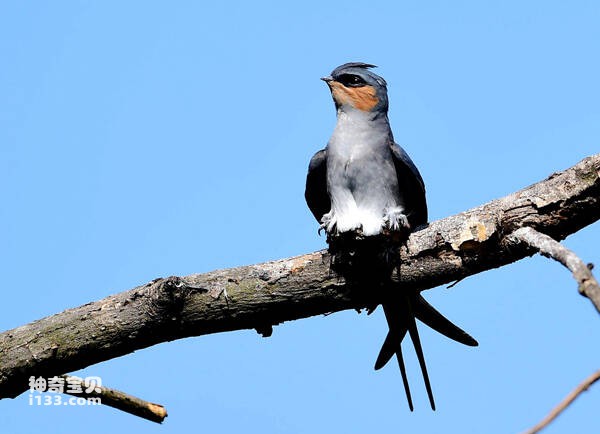Hemiprocne coronata
IUCN
LCBasic Information
Scientific classification
- name:Hemiprocne coronata
- Scientific Name:Hemiprocne coronata,Crested Treeswift
- Outline:Climbing birds
- Family:
Vital signs
- length:21-25CM
- Weight:No textual research information is available
- lifetime:No textual research information is available
Feature
The head has a long crest, shining with green luster
Distribution and Habitat
It is distributed in India, Myanmar, Indochina Peninsula and Indonesia and other tropical areas of South Asia and Southeast Asia, China is only distributed in Yunnan Cangyuan, Jinghong, Mengyang, Menglun and other places, in addition, some people have seen it in the Taiwan Strait and Shandong coast sailing.
It mainly inhabits forest margins, secondary forests, orchards, parks and other open areas with trees.
Appearance
The crested swallow is a small bird with a body length of 21-25 cm, its most notable feature is a long crest on its head, shining with green luster, very beautiful and distinctive. Its beak is short and round, its eyes are large, and its tail feathers are very long, tapering to the tip of the tail. The upper body is blue-gray.
Gray, swift-like, with a long tail and long, curved wings. It is characterized by an erect crested head. Lower body gray. Male birds have brown patches on the side of the face and ear feathers. Subadult birds are brown, with very small heads and white and dark brown scales.
Iris - brown; Mouth - black; Feet - Red.
Cry: A loud, high-pitched cry of cher-tee-too-cher-tee-too-cher-tee-too.
Details
Hemiprocne coronata, Crested Treeswift, has 6 subspecies.

The swallowtail flies in small groups, often flying in circles over open land and forests, and sometimes over water such as rivers. Their diet is mainly a variety of flying insects such as mosquitoes and moths, and they can also hunt while flying, but they spend significantly less time in the air than other swifts, and their feeding behavior is not quite the same as that of other swifts. Instead of constantly flying in the air to feed, it often stops on the top branches of the tree canopy, and takes off to catch insects and other food when it appears in the nearby space. Because of its large body and long wings, it is always separated from each other in the air like a sickle, just like a small plane, sometimes flying low and sometimes jumping into the air. They roost together in groups at night, sometimes individually.

The breeding period is from March to June, and it nests in rock burrows and tree holes. The nest is made of moss, which is tightly held together by saliva. Its nest is very small and delicate, generally only 2.5-5 cm in diameter, the shape of a cup or bag, mainly composed of broken bark, small feathers and saliva cement, the structure is very tight and strong, and firmly fixed on the branch. The nest is black in color, with a few gray and dirty white spots, and the appearance is very similar to the color of the branch, which looks like a small bag protruding from the branch when viewed from below. Each clutch produces only one egg, which is pale gray or off-white in color, sometimes stained with blue, and is oval in shape. Its chicks are nocturnal and need to be carefully fed by their parents to grow up.
Listed on the International Union for Conservation of Nature (IUCN) 2018 Red List of Threatened Species ver 3.1 - Not Threatened (LC).
It is listed in the second level of the List of China's National Key Protected Wildlife.
Protect wild animals and eliminate wild meat.
Maintaining ecological balance is everyone's responsibility!








